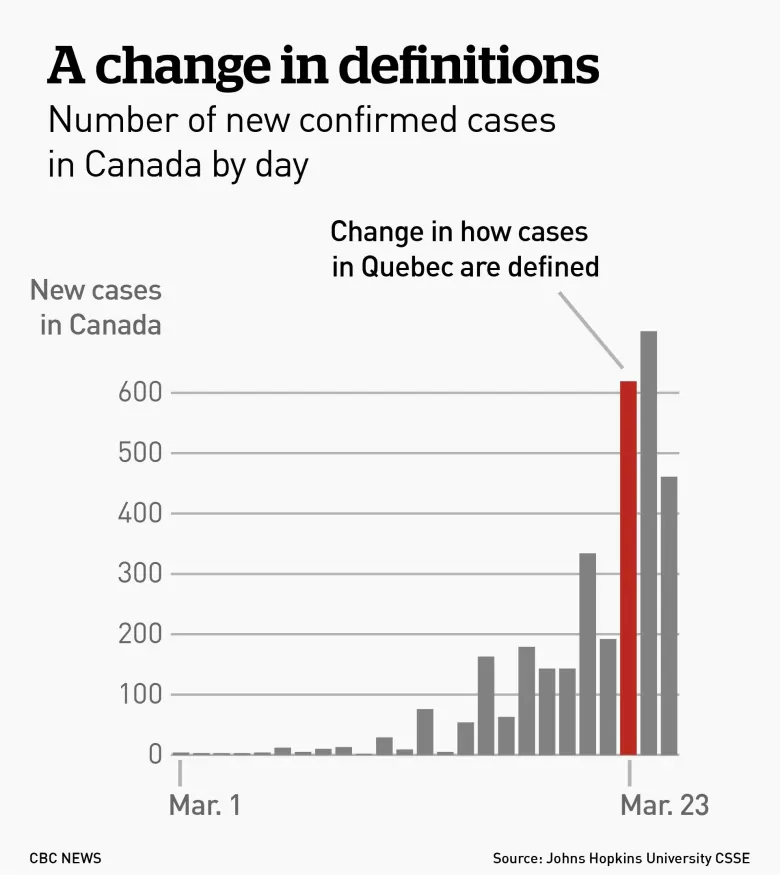Every day, Canadians are bombarded with fresh numbers on the COVID-19 pandemic from around the world. Check out these tips to help make sense of the data.

New cases, cumulative cases, death counts, testing rates.
Every day, Canadians are bombarded with fresh numbers on the COVID-19 pandemic from around the world. Maps and charts show a variety of statistics, but some of them lack context.
Here is a primer to help you make sense of the numbers.
Daily case numbers are a window to the past
On a daily basis, countries and regions are reporting new cases of COVID-19 that were confirmed by tests. News organizations report these in real time, adding them to a running tally.
What’s important to understand is that these daily numbers are a window to the past.
COVID-19 symptoms can take anywhere from a few days to two weeks to manifest, according to Greta Bauer, a professor of epidemiology and biostatistics at Western University in London, Ont.
Then it can take a few more days for the symptoms to get serious enough for a person to seek medical help and get tested.

And then there’s the wait for the lab results to come back.
“I’m on Day 11 of waiting for my own test results,” Bauer said on Friday.
This means we’ll have a better idea in a matter of weeks how many people are infected today.
“We call this the iceberg of diseases in epidemiology,” she said. “We’re looking in a rearview mirror.”
The number of cases is higher
Because the number of daily confirmed cases is a window to the past, the number of actual cases today is likely much higher.
Compared to countries such as Singapore and South Korea, Canada is not testing as many of its people. To date, tests in this country have typically been reserved for patients who have recently travelled abroad, or patients showing severe symptoms.
Perhaps not surprisingly, until very recently, most confirmed cases in Canada were linked to travel.
“That’s not a finding; that’s a self-fulfilling prophecy,” Bauer said.
The video below from the popular non-profit education site Khan Academy explains how to predict the actual number of cases based on the reported confirmed cases.
There are also infected people who don’t show symptoms but can still shed the virus, known as asymptomatic spreaders. In Canada, they are not reflected in the daily counts.
There’s no universal definition of a confirmed case
So, what makes a COVID-19 case official and part of the daily count? It depends on the country or region.
Some places define a confirmed case as one where a person was tested and the results were validated in a lab. Other jurisdictions consider a case confirmed if the patient exhibits all the major symptoms.
Sometimes, the definition of a confirmed case can change. Last week, Quebec changed how it counts new cases. Previously, a positive test at a hospital lab had to be validated at the Laboratoire de santé publique du Québec. The second step has been eliminated, clearing a backlog of pending results. This resulted in a big jump in new confirmed cases.

Alberta recently expanded its own testing criteria to include people with mild symptoms, said Stephanie Smith, director of infection control at the University of Alberta Hospital i

